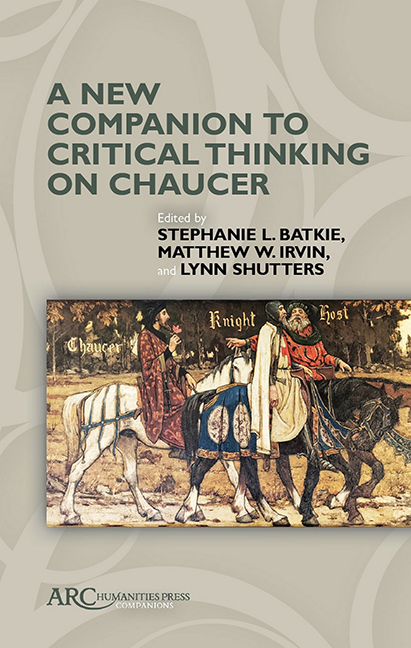Book contents
Pite
Published online by Cambridge University Press: 21 October 2021
Summary
Man of Law's Tale
Knight's Tale
Merchant's Tale
Squire's Tale
VARIATIONS OF THE word pite appear in the General Prologue and fifteen of the Canterbury Tales. But they cluster meaningfully in just seven, each associated with poetic high style and/or high social estate: the Knight's (14 times), Man of Law's (10), Clerk's (8), Merchant's (3), Squire's(4), and Franklin's (6) Tales, and the Tale of Melibee (5). In contrast, references to piteare strikingly absent from the fabliau or estate satire tales—the Miller’s, Reeve’s, Cook’s, Friar’s, Summoner’s, and Shipman's Tales—and from the two tales associated with embodied, oral female wisdom—the Wife of Bath's and Manciple’s. We might expect, based on the centrality of ennobling love as a crucial question in so much of Chaucer's earlier poetry, that when pite clusters in the Tales it would be in the context of fin’amor service—where the pitous situation of the courtly lover crucially elicits (or not) a corresponding pite on the part of his lady. But the fin’amor contexts for pity in the Tales, more often than not, distort typical modes of signification and undercut any ennobling function it might have. Nor do the Canterbury Tales echo the widespread use of empathetic pity in late medieval affective devotion, where devotees are incited to identify in embodied compassionate terms with events in Christ's life and thereby connect directly with the godhead through Christ's humanity and sacrifice. Such affective devotion is largely absent from “straight” religious tales such as the Second Nun's and Parson’s. And as we will see, when such structures of feeling are evoked in a quasi-saint's legend such as the Man of Law's Tale, pite emerges as a much more hybrid form of feeling, as much secular as religious.
Instead, Chaucer associates pite in the Canterbury Tales both with specifically gentil or ennobling modes of feeling and with how a particular kind of womanly attunement to empathy can profoundly affect masculine self-rule. As a case study for considering Chaucer's analysis of such exchanges of feeling, I will focus on those tales—Knight’s, Man of Law’s, Merchant’s, and Squire’s— where the refrain “pitee runneth soone in gentil herte” appears.
- Type
- Chapter
- Information
- A New Companion to Critical Thinking on Chaucer , pp. 59 - 74Publisher: Amsterdam University PressPrint publication year: 2021



